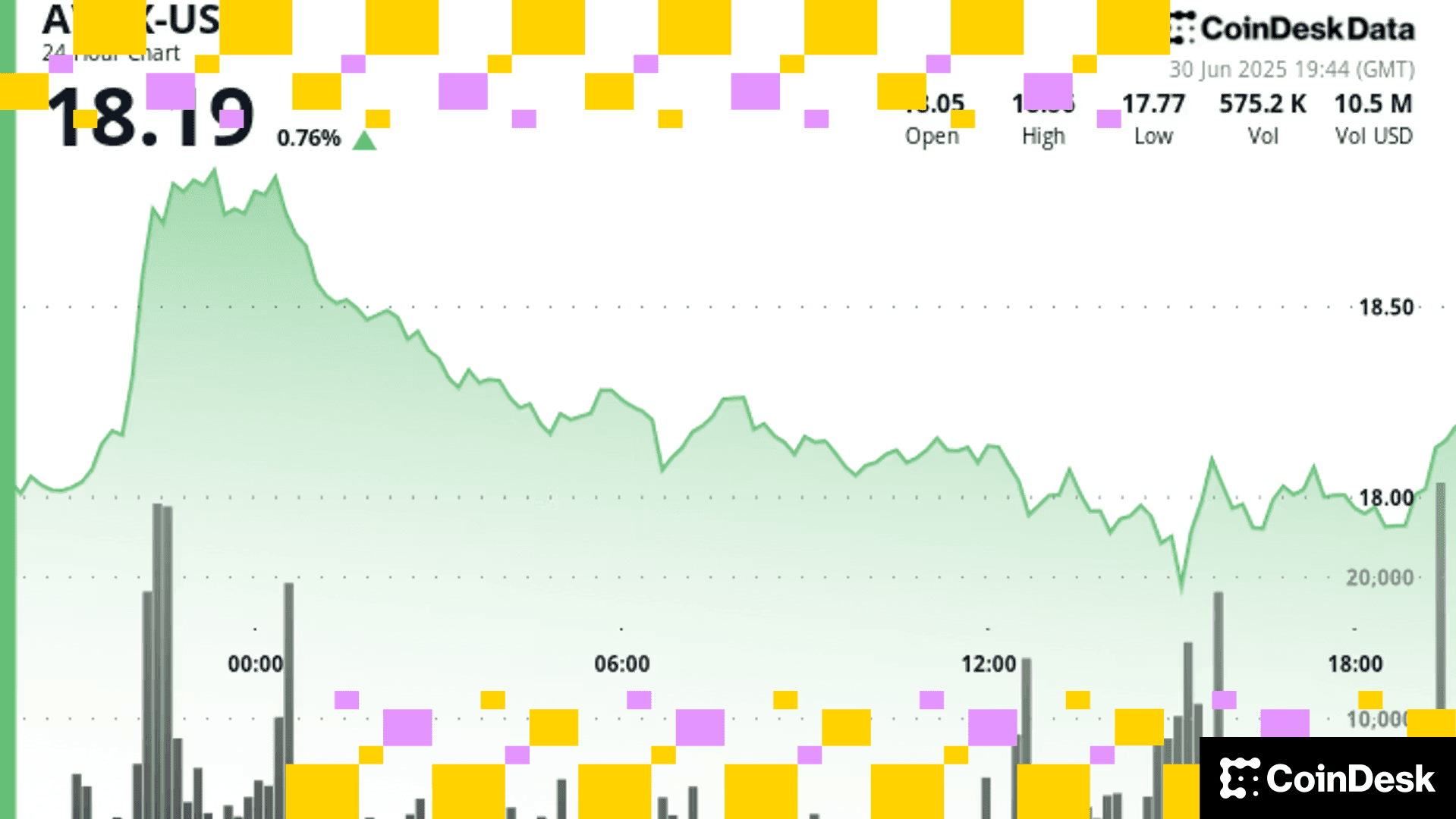U.S. Senators Lummis, Gillibrand Take on Stablecoin Legislation With New Bill
Senators Cynthia Lummis and Kirsten Gillibrand unveiled a new bill Wednesday, hoping to move the needle on stablecoin legislation.
- U.S. Senators Cynthia Lummis and Kirsten Gillibrand introduced a new stablecoin bill on Wednesday, hoping to create definitions for who can issue dollar-pegged digital assets and how.
- A stablecoin bill is the type of crypto-specific legislation most likely to become law, but progress on these efforts has stalled out in the past.
U.S. Senators Cynthia Lummis (R-Wyo.) and Kirsten Gillibrand (D-N.Y.) are taking another swing at crypto-specific legislation, with a narrowly tailored bill seeking to define how stablecoins – cryptocurrencies that maintain value with some other asset or currency – will operate in the U.S.
The lawmakers unveiled a new stablecoin bill Wednesday in the latest effort to create legislation directly addressing this corner of the crypto market. Under their proposed bill, payment stablecoin issuers would have reserve and operational requirements, including needing to create subsidiaries specifically to issue stablecoins. The bill would also require stablecoin issuers to deal in dollar-backed tokens.
A payment stablecoin, as defined by the bill, would be any dollar-pegged digital asset "that is, or is designed to be, used as a means of payment or settlement." Issuers would be "obligated" to convert to dollars, and the asset itself won't be a security. Issuers would either have to be non-depository trust companies registered with the Federal Reserve Board of Governors or a depository institution "authorized as a national payment stablecoin issuer." Both state and federal regulators would have roles overseeing these entities.
Stablecoin issuers would also be required to ensure their tokens are fully backed by reserve assets and disclose to the public what those assets are. They would also need to tap a non-depository trust as a custodian, and the trust will be required to use a depository institution as a sub-custodian, according to the bill.
The bill also appears to ban algorithmic stablecoins, which are typically undercollateralized tokens designed to maintain their value through algorithmic mechanisms.
In a statement, Gillibrand said a regulatory framework for stablecoins "is absolutely critical to maintaining the U.S. dollar's dominance," and the proposed bill would keep the existing dual banking system intact.
"It protects consumers by mandating one-to-one reserves, prohibiting algorithmic stablecoins, and requiring stablecoin issuers to comply with U.S. anti-money laundering and sanctions rules," she said. "To draft the strongest bill possible, our offices worked closely with the relevant federal and state agencies and I’m confident this legislation can earn the necessary support in the Senate and the House."
Her counterpart, Lummis, said the bill also meets "the growing demand for our ever-evolving financial industry" in a statement, echoing Gillibrand's point on the dual banking system and the dollar's dominance.
The bill created a $10 billion limit for non-depository trust institutions to be able to issue payment stablecoins. Once the issuer exceeds that amount, it must be "a depository institution that has been authorized as a national payment stablecoin issuer," the bill's text said. At present, the largest U.S.-based stablecoin issuer, Circle (with $33 billion in outstanding
Lummis and Gillibrand have jointly introduced a number of bills addressing the digital assets market, including a bill last summer that would create legal definitions for decentralized finance and draw lines for where federal agencies like the Commodity Futures Trading Commission have jurisdiction over crypto. While these bills have not gone anywhere, a Senate staffer told reporters on Tuesday that the lawmakers had sought feedback from federal regulators and the White House.
Stablecoin legislation has long been seen as the type of crypto-specific legislation most likely to become law in the U.S., though progress has been slow. House Financial Services Chair Patrick McHenry (R-N.C.) and Ranking Member Maxine Waters (D-Calif.) have worked on stablecoin legislation for years. A bill advanced out of committee last year, but progress stopped after then-Speaker of the House Kevin McCarthy was ousted.
Last week, Punchbowl News reported that Senate Majority Leader Chuck Schumer (D-N.Y.) met with McHenry and Waters to discuss potentially attaching stablecoin legislation to a bill reauthorizing the Federal Aviation Administration, seen as a must-pass piece of legislation. On Tuesday, Sen. Sherrod Brown, who chairs the Senate Banking Committee, signaled stablecoin legislation could advance if it included certain specific safeguards.
More For You
Exchange Review - March 2025

CoinDesk Data's monthly Exchange Review captures the key developments within the cryptocurrency exchange market. The report includes analyses that relate to exchange volumes, crypto derivatives trading, market segmentation by fees, fiat trading, and more.
What to know:
Trading activity softened in March as market uncertainty grew amid escalating tariff tensions between the U.S. and global trading partners. Centralized exchanges recorded their lowest combined trading volume since October, declining 6.24% to $6.79tn. This marked the third consecutive monthly decline across both market segments, with spot trading volume falling 14.1% to $1.98tn and derivatives trading slipping 2.56% to $4.81tn.
- Trading Volumes Decline for Third Consecutive Month: Combined spot and derivatives trading volume on centralized exchanges fell by 6.24% to $6.79tn in March 2025, reaching the lowest level since October. Both spot and derivatives markets recorded their third consecutive monthly decline, falling 14.1% and 2.56% to $1.98tn and $4.81tn respectively.
- Institutional Crypto Trading Volume on CME Falls 23.5%: In March, total derivatives trading volume on the CME exchange fell by 23.5% to $175bn, the lowest monthly volume since October 2024. CME's market share among derivatives exchanges dropped from 4.63% to 3.64%, suggesting declining institutional interest amid current macroeconomic conditions.
- Bybit Spot Market Share Slides in March: Spot trading volume on Bybit fell by 52.1% to $81.1bn in March, coinciding with decreased trading activity following the hack of the exchange's cold wallets in February. Bybit's spot market share dropped from 7.35% to 4.10%, its lowest since July 2023.
More For You












